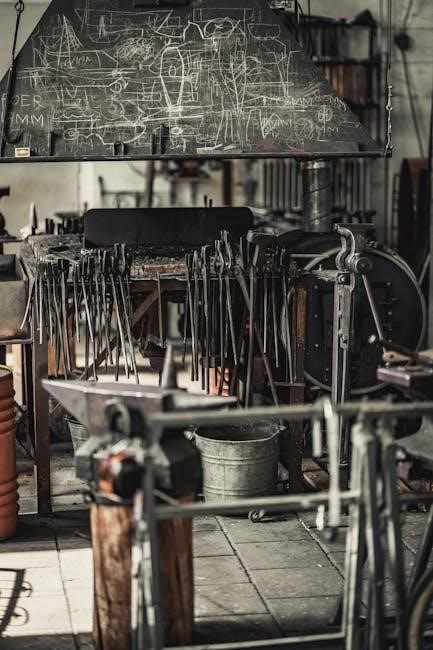
gaffers and sattler furnace manual
Overview of Gaffers and Sattler Furnaces
Gaffers and Sattler furnaces, established in 1925, were known for their durability. They were later acquired by Magic Chef in 1969. These older furnaces often require specific maintenance procedures. Understanding their operation is key to ensuring safety and efficiency.
History of Gaffers and Sattler
The Gaffers and Sattler company began its journey in Los Angeles in 1925, founded by John H. Sattler, George A. Sattler, and W.C. Gaffers. Initially, the company focused on producing a range of appliances, eventually including furnaces known for their robust construction. In 1946, Utility Appliance Corporation acquired Gaffers and Sattler, alongside Occidental Stove, expanding their market presence. Republic Corporation then purchased the combined entity in 1961, further changing the landscape of the company.
However, in 1968, Republic Corporation decided to sell Gaffers and Sattler to Magic Chef for approximately $20 million, marking another shift in ownership. By 1969, Gaffers and Sattler became a subsidiary of Magic Chef, and the original name was eventually discontinued. Magic Chef itself was later acquired by Maytag in 1986, with the air conditioning division being sold to Lennox in 1988 and renamed Armstrong Air. This intricate history underscores the evolution of Gaffers and Sattler within the broader appliance industry.
Importance of Manuals for Older Furnaces
Manuals are crucial for operating and maintaining older Gaffers and Sattler furnaces, providing specific instructions tailored to the unit’s design. These manuals often contain essential details on pilot light operation, thermostat connections, and regular maintenance procedures, such as oiling the motor every six months. Without a manual, troubleshooting issues like a pilot light that won’t stay lit or a malfunctioning fan can become significantly more challenging, potentially leading to incorrect repairs or safety hazards.
Given the age of these furnaces, understanding the original manufacturer’s guidelines is paramount. Manuals offer insights into the furnace’s unique features, recommended parts, and safety precautions, including gas leak detection and flammable material storage. Furthermore, manuals can guide homeowners through tasks like identifying the furnace model and determining its age from the serial number, aiding in sourcing compatible replacement parts and ensuring proper system function. Therefore, locating and utilizing the correct manual is invaluable for the safe and efficient operation of older Gaffers and Sattler furnaces.
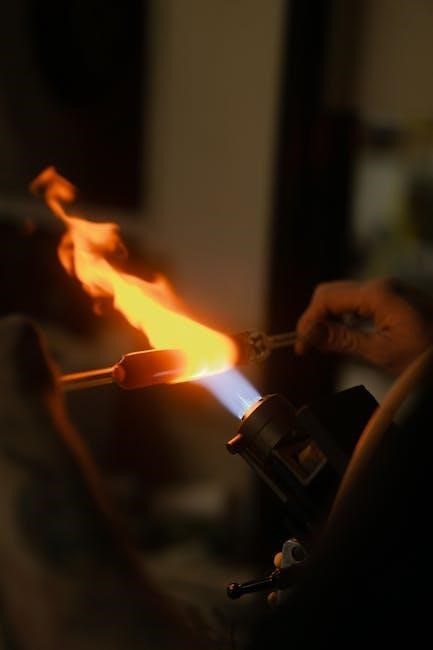
Troubleshooting Common Issues
Common problems with Gaffers and Sattler furnaces include pilot light failures, fan malfunctions, and thermostat irregularities. Diagnosing these issues often requires a manual to understand the specific components and troubleshooting steps for the model.
Pilot Light Problems
A frequent issue with older Gaffers and Sattler furnaces is a pilot light that won’t stay lit. This can stem from a faulty thermocouple, which senses the pilot flame and keeps the gas valve open. A dirty or clogged pilot light orifice can also prevent consistent ignition.
Check for drafts that might extinguish the flame and ensure the gas supply is adequate. Some models have a specific valve that must be held down while lighting the pilot. If problems persist, professional assistance might be needed to inspect the gas valve or other components.
Remember to always prioritize safety when dealing with gas appliances. Consult the furnace manual for detailed instructions specific to your model. A malfunctioning pilot light can indicate underlying issues requiring immediate attention. Regular inspection and maintenance are essential.
Fan Not Working
If the fan in your Gaffers and Sattler furnace isn’t working, several factors could be responsible. First, check the fan limit switch, which controls the fan’s operation based on the furnace’s temperature. A faulty switch might prevent the fan from turning on or off properly.
Examine the fan motor itself for signs of wear or damage. Over time, motors can fail, requiring replacement. Also, inspect the fan speed switch and the wiring connections to ensure they are secure and functioning correctly. A blown fuse or tripped circuit breaker could also be the cause.
If the burners ignite, but the fan doesn’t activate, it’s crucial to address the issue promptly to prevent overheating. Consulting a qualified technician for diagnosis and repair is recommended, especially when dealing with electrical components.
Thermostat Issues
Thermostat problems can significantly impact the functionality of your Gaffers and Sattler furnace. If the furnace isn’t responding to thermostat adjustments, begin by verifying that the thermostat is properly set to “heat” mode and that the set temperature is higher than the current room temperature. Check the thermostat’s batteries if it’s a digital model, as low batteries can cause malfunctions.
Inspect the wiring connections between the thermostat and the furnace control panel. Loose or corroded wires can disrupt the signal transmission. If the wiring appears intact, consider testing the thermostat with a multimeter to confirm its functionality. A faulty thermostat might require replacement.
For older Gaffers and Sattler models, ensure the thermostat is compatible with the furnace’s voltage requirements. An incompatible thermostat can lead to erratic behavior or complete failure. If issues persist, consult with an HVAC professional for troubleshooting and repair.
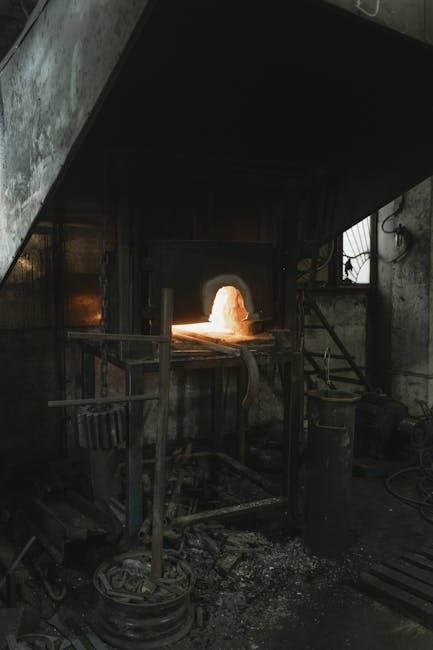
Maintenance Procedures
Proper maintenance is crucial for Gaffers and Sattler furnaces. Key tasks include oiling the motor, filter maintenance (if applicable), and gas valve replacement. Regular checks ensure efficient and safe operation of your vintage furnace.
Oiling the Motor
Oiling the motor of your Gaffers and Sattler furnace is a crucial maintenance step, recommended approximately every six months to ensure smooth operation and prevent overheating. Identifying the motor’s oil ports is the first step, typically located near the motor’s bearings. Use a lightweight machine oil, such as SAE 20, applying just a few drops into each oil port; Avoid over-oiling, as excess oil can attract dust and debris, potentially hindering performance.
After oiling, manually rotate the motor shaft to distribute the oil evenly. Listen for any unusual noises, which could indicate underlying issues. Regular oiling minimizes friction, extending the motor’s lifespan and maintaining optimal airflow for efficient heating. Ignoring this maintenance can lead to motor failure, requiring costly repairs or replacement. Remember to consult your specific model’s manual for precise instructions.
Filter Maintenance (if applicable)
Filter maintenance, if applicable to your Gaffers and Sattler furnace model, is a vital step in ensuring efficient operation and good air quality. Some older models may not have a readily accessible filter, so inspecting the unit is crucial. If a filter is present, locate its housing, usually near the blower motor. Regularly check the filter, ideally every one to three months, depending on usage and environmental conditions.
A dirty filter restricts airflow, causing the furnace to work harder and reducing its efficiency. Replace disposable filters with new ones of the correct size and type. For reusable filters, clean them with mild soap and water, allowing them to dry completely before reinstalling. Consistent filter maintenance prevents dust and allergens from circulating, improving indoor air quality and extending the furnace’s lifespan.
Gas Valve Replacement
Replacing the gas valve on a Gaffers and Sattler furnace is a task that demands extreme caution and should ideally be performed by a qualified HVAC technician. First, ensure the gas supply to the furnace is completely shut off at the main gas valve. Disconnect the electrical power to the furnace to prevent any accidental ignition. Carefully disconnect the gas line connections to the existing valve, noting their positions for correct reassembly.
Disconnect any electrical connections to the valve, such as those for the pilot safety flame sensor. Remove the old gas valve and install the new valve, ensuring it is the correct replacement part for your specific furnace model. Reconnect the gas lines and electrical connections securely. Finally, turn the gas supply back on slowly and check for any gas leaks using a soap and water solution.
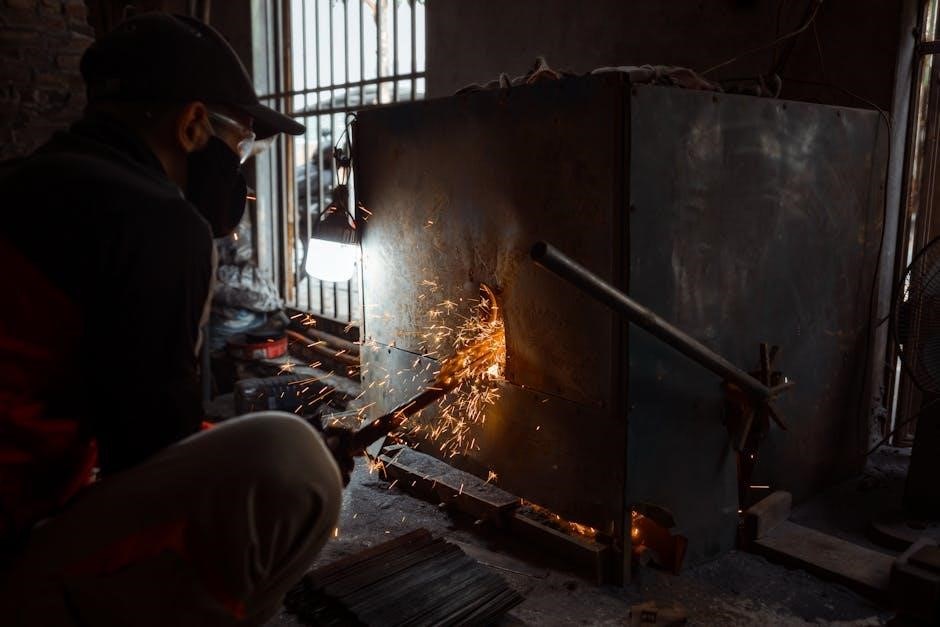
Finding Manuals and Information
Locating manuals for Gaffers and Sattler furnaces can be challenging due to their age. Online forums and HVAC communities often provide valuable resources. Identifying the model number is crucial for your search.
Online Resources and Forums
Finding information on vintage Gaffers and Sattler furnaces often requires exploring various online resources. Specialized HVAC forums are excellent for connecting with experts. They will share knowledge and provide troubleshooting advice based on experience. Many forums have dedicated threads discussing specific Gaffers and Sattler models. These discussions often include shared manuals, wiring diagrams, and repair tips contributed by members. Furthermore, online appliance parts retailers sometimes host archived manuals or links to relevant information.
Websites dedicated to historical appliance documentation can also be invaluable. These sites may contain scanned copies of original manuals. They cover installation instructions, maintenance schedules, and troubleshooting guides. Additionally, video platforms like YouTube may host demonstrations on repairing or maintaining Gaffers and Sattler furnaces. Remember to verify the accuracy of any information found online. Consulting multiple sources ensures well-informed decisions about furnace care.
Identifying the Furnace Model
Accurately identifying your Gaffers and Sattler furnace model is crucial for locating the correct manual and parts. The model number is typically found on a nameplate affixed to the furnace. This plate is generally located inside the unit’s access panel or on the exterior casing. Look for a series of letters and numbers, such as “U80-1” or “100 FEF,” which constitute the model identifier. Note this information carefully.
If the nameplate is damaged or illegible, inspect other areas of the furnace for stamped markings. These markings might provide clues to the model designation. Consult online resources and forums dedicated to Gaffers and Sattler appliances. Comparing your furnace’s physical characteristics with images and descriptions can also help. Once you have identified the model, you can narrow your search for a compatible manual. This also ensures that you order the correct replacement parts for repairs.
Determining Age from Serial Number
Determining the age of your Gaffers and Sattler furnace often relies on deciphering its serial number. The serial number, usually found on the same nameplate as the model number, holds the key to its manufacturing date. Unfortunately, there isn’t a universally consistent decoding method for all Gaffers and Sattler models. However, some online resources and HVAC forums may offer specific guides or databases for interpreting these serial numbers.
Begin by carefully transcribing the serial number. Then, search online for “Gaffers and Sattler serial number decoder.” If a specific decoder is unavailable, try contacting HVAC professionals. Technicians familiar with older appliances may be able to provide insights. They can use the serial number to estimate the furnace’s age based on production trends. Keep in mind that the accuracy of age estimation can vary depending on available information. Even an approximate age can be helpful for maintenance and repair decisions.
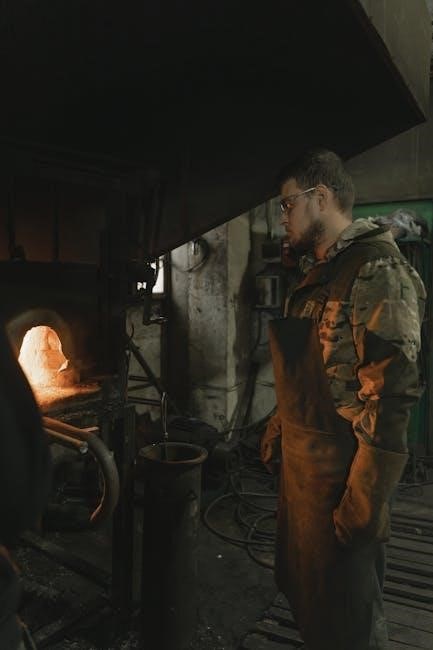
Safety Precautions
Prioritize safety. Gas leak detection is crucial. Ensure no flammable materials are near the furnace. Always consult a professional for repairs. Regular inspections are essential for older models.
Gas Leak Detection
Detecting gas leaks in Gaffers and Sattler furnaces is paramount for safety. Given their age, components may degrade, increasing leak risks. If a gas odor is present, immediately evacuate the premises and contact the gas company or a qualified HVAC technician. Do not attempt to locate the leak yourself.
A simple soap-and-water solution can be applied to pipe connections; bubbles indicate a leak. However, this should be done cautiously and only if you are comfortable with the procedure. Regularly inspect the area around the furnace for any signs of gas leaks.
Carbon monoxide detectors are crucial. Ensure they are functional and properly placed. If a detector alarms, immediately ventilate the area and seek professional assistance. Neglecting gas leak detection poses significant hazards.
Flammable Materials
Maintaining a safe distance between Gaffers and Sattler furnaces and flammable materials is crucial. Due to the heat generated during operation, combustibles pose a fire hazard. Never store gasoline, paints, or cleaning solvents near the furnace. Keep the area clear of paper, cardboard, and fabrics.
Ensure proper ventilation around the unit to prevent heat buildup, which could ignite nearby materials. Regularly inspect the area for any potential fire hazards. Pay close attention to items stored near the furnace, especially in confined spaces.
If the furnace is located in a crawl space or basement, take extra precautions to ensure adequate clearance and prevent the accumulation of flammable debris. Addressing this risk greatly minimizes potential fire hazards.